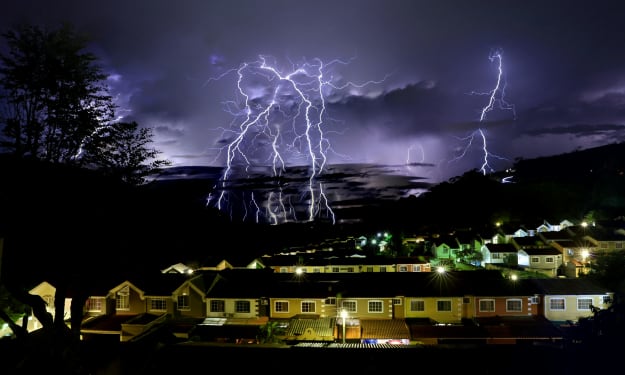In a small coastal village named Araville, nestled on the shores of the Pacific Ocean, generations of families had lived off the bounty of the sea. For them, the azure waters were not just a source of livelihood, but a sacred connection to their ancestors. However, as the tides of climate change encroached upon their lives, the village faced an emotional dilemma.
In the early morning hours, Nia, a young fisherwoman, gazed at the horizon from her modest, weather-beaten cottage. The sea had been her life, her mother's life, and her grandmother's life. But now, it was a tempestuous lover, growing more unpredictable with each passing day. The village elders gathered, concern etched into their furrowed brows. The sea had already stolen several feet of their beloved coastline, and the villagers knew they couldn't fight it much longer.
Over a communal breakfast of steaming porridge, Nia's father, Ravi, spoke of the once-thriving coral reefs that were now bleached and lifeless. He described the vibrant fish that had once populated their nets but had now dwindled to mere wisps. The impact of climate change was clear, and it was impossible to ignore.
Emotions ran high as the villagers realized their way of life was under threat. Nia's best friend, Mateo, had always dreamed of becoming a marine biologist, but those dreams were drowning as surely as their coastline. He had seen the dire consequences of warming oceans and coral bleaching firsthand. His voice shook as he spoke of the delicate ecosystems that were unraveling before their eyes.
As the seasons passed, it became evident that Araville could no longer withstand the encroaching sea. Storms grew fiercer, waves larger, and saltwater intrusion polluted their freshwater sources. It was not just the livelihoods of the villagers at stake; it was their very homes, their identities, and their connections to the land and sea.
Nia's family, along with Mateo's, decided it was time to seek refuge inland. Leaving behind their ancestral homes, they embarked on an emotional journey, a farewell to a place that had cradled their hopes and memories for generations. With each step away from the coast, their hearts grew heavier, their eyes wetter.
As they reached the makeshift camp for displaced coastal communities, their emotions were a swirling mix of grief, anger, and fear. They were not alone; countless families from coastal villages across the world found themselves in similar situations. They shared stories of loss, resilience, and the desperate hope for a better future.
In the midst of the refugees, Nia met Keira, an elderly woman who had spent her entire life in Araville. Keira had a weathered face that bore the lines of time, but her spirit remained unbroken. She spoke of the history, the traditions, and the love she had for the village she called home. Tears welled in Nia's eyes as Keira reminisced about her family, now resting in the village cemetery that was slowly being claimed by the encroaching sea.
As Nia and Keira talked, they realized that their connection to the land and the sea would forever be a part of them, no matter where they found refuge. The emotional toll of leaving their homeland was immeasurable, but the necessity of survival compelled them to adapt and carry their memories with them.
Nia and Mateo, with the knowledge they had gained from their coastal upbringing, decided to advocate for climate action. They joined forces with environmental organizations and helped spread awareness about the plight of coastal communities. They also worked on initiatives to protect and restore marine ecosystems, hoping to ensure that future generations could experience the same love for the sea they had known.
As the years passed, the world slowly began to recognize the urgency of climate change. International agreements were forged, and efforts to reduce carbon emissions gained momentum. Nia, Mateo, and Keira found solace in knowing that their struggles were not in vain and that their stories had helped to awaken the conscience of the world.
The emotional journey of Nia and her village served as a poignant reminder of the human faces behind the climate crisis. Their sacrifices and resilience embodied the hope that, even in the face of overwhelming challenges, humanity could come together to protect our planet, ensuring that no one else had to bid farewell to their homes, their roots, and the sea they loved.
About the Creator
Enjoyed the story? Support the Creator.
Subscribe for free to receive all their stories in your feed. You could also pledge your support or give them a one-off tip, letting them know you appreciate their work.






Comments (1)
Nice job